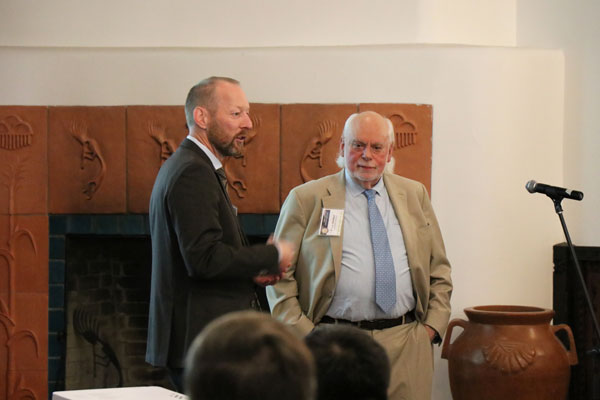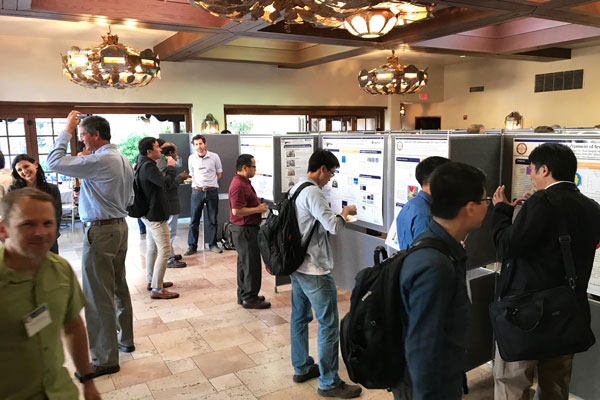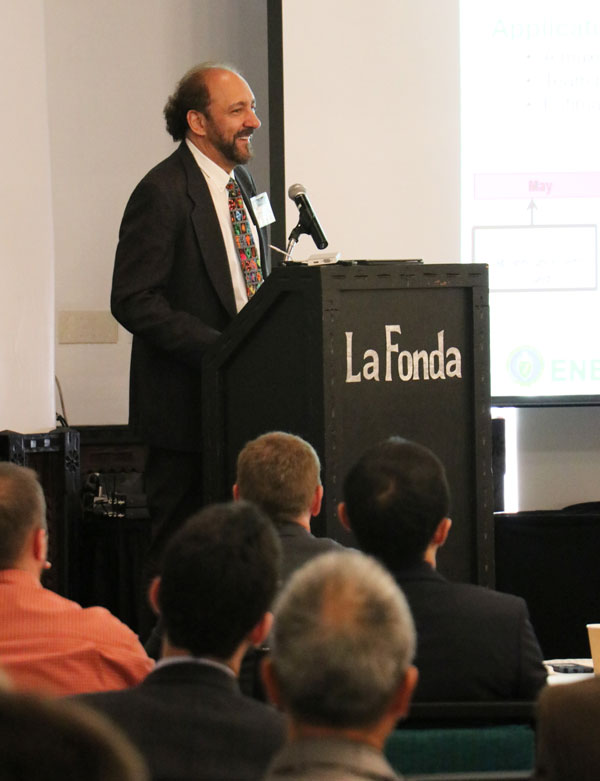In 1991, an editor from the Journal of the American Chemical Society directed a paper’s author to delete his prediction that the future would hold “intricate molecular assemblies where the components will be designed to receive, store, transfer, and transmit information in a highly controllable manner.”
Hype, the unimpressed editor called it.
Sir Fraser Stoddart, the author, insisted on keeping the passage, and in 2016, he fulfilled his own prophecy, earning a share of the Nobel Prize in Chemistry for the design and synthesis of molecular machines.

“Sometimes,” Stoddart said, “it pays to stick to your guns in terms of what you believe in and not give way to editors and reviewers.”
The laureate related the story in a plenary address that headlined the annual meeting of the Center for Integrated Nanotechnologies, which took place Sept. 24-25 in Santa Fe.

This year’s conference highlighted research performed by the CINT user community in the areas of quantum materials, nano-mechanics and imaging. CINT is a DOE-funded nanoscience research facility, jointly operated by Sandia and Los Alamos national laboratories, that provides users from around the world with access to expertise and instrumentation with a focus on nanoscience integration.
The sessions on quantum materials attracted the largest crowds. Several talks in that symposium focused on advances in topological materials — a class of materials shown to have unusual properties such as the ability to be a conductor at their surface but an insulator everywhere else.
In a parallel symposium, a striking presentation from Tim Yeh of The University of Texas at Austin demonstrated a technique that tracks single particles through a biological system, which Yeh hopes can be applied to improve drug delivery and to better understand cancer pathways.
The meeting was also an opportunity for CINT staff to update users on the center’s new and upcoming capabilities.
Researcher Nan Li, for example, mentioned during his presentation that CINT was working with him to integrate a nano-indenter — a tool used to test mechanical properties such as hardness — into a glove box to enable materials testing in a controlled environment, including the absence of oxygen. Li’s collaborator, Brad Boyce of Sandia, then stood up to appeal to the audience. If others would also find this technology useful, he said, they should tell him so he could expedite its development. The integrated tool could be particularly important for lithium-ion battery research, since lithium reacts readily with oxygen.
Coincident with the conference, DOE announced a round of funding decisions, including many in quantum information sciences. At least one researcher, Sergey Frolov from the University of Pittsburgh, celebrated during his presentation that his proposal had been selected.
